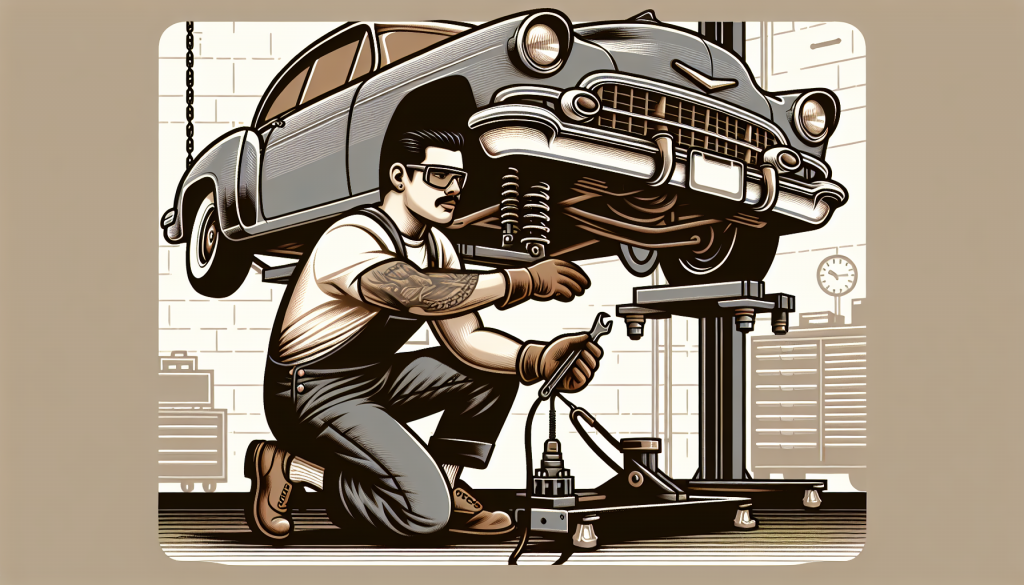Getting a Grip on Suspension Issues
Fixing suspension problems is a must for car owners who want a smooth and safe ride. Let’s break down the basics of spotting and fixing these issues.
Why Regular Check-Ups Matter
Keeping up with regular check-ups is key to making sure your car’s suspension stays in good shape. By sticking to a routine, you can catch small problems before they turn into big headaches. Look out for things like uneven tire wear, weird noises, and steering troubles.
| What to Check | How Often |
|---|---|
| Tire Wear | Every 6 Months |
| Steering Parts | Every Year |
| Suspension Joints | Every Year |
| Alignment | Every Year |
Using the Right Tools
Using the right tools is a game-changer for spotting and fixing suspension problems. Gadgets like laser alignment systems and digital angle finders give you the exact measurements you need to get things just right. Want to know more about these tools? Check out our article on suspension alignment tools.
Tweaking Camber, Caster, and Toe
Getting the camber, caster, and toe just right is crucial for a smooth ride. These tweaks make sure your wheels are lined up properly, which helps with stability and makes your tires last longer.
- Camber: This is the tilt of your wheels when you look at them head-on. Adjusting camber helps your tires grip the road better.
- Caster: This is the tilt of the steering axis when you look at your car from the side. Adjusting caster helps with steering and cornering.
- Toe: This is how much your tires point in or out when you look at them from above. Adjusting toe helps with even tire wear and handling.
Taking It for a Spin
After making adjustments, it’s crucial to take your car for a spin to make sure everything’s working right. Drive on different types of roads to see how your car handles and make sure the suspension issues are fixed.
For a full guide on the suspension alignment process, check out our detailed article on suspension alignment process. Regular check-ups, the right tools, proper adjustments, and thorough road testing are all part of keeping your ride smooth and safe.
Fixing Suspension Problems: A No-Nonsense Guide
Keeping your car running smoothly means tackling suspension issues head-on. Here’s how to keep your ride comfy and safe.
Get Your Wheels Aligned with New Tires
Slapping on new tires without checking alignment is like putting on new shoes without tying the laces. You’ll end up with uneven wear and lousy handling. Always get an alignment check when you get new tires to keep things running smoothly and extend tire life. Misaligned wheels can mess with your safety, so don’t skip this step.
| Tire Condition | Need Alignment Check? |
|---|---|
| New Tires | Absolutely |
| Uneven Tire Wear | Definitely |
| Regular Maintenance | Yep |
Want the nitty-gritty? Check out our suspension alignment process.
Train Your Technicians on the Latest Gear
Your car’s suspension is only as good as the folks working on it. Make sure your technicians know their stuff and are trained on the latest tools and techniques. Keeping them up-to-date with certifications and training programs ensures they can diagnose and fix issues accurately.
Need training resources? Visit suspension alignment training.
Teach Customers Why Alignment Matters
Most folks don’t realize how crucial regular wheel alignments are. Educate them on how proper alignment can save their tires, boost fuel efficiency, and make driving smoother. Hand out educational materials and offer consultations to help them see the light.
For more on this, head to suspension alignment benefits.
Adjust for the Seasons
Weather changes can mess with your car’s alignment. Regular seasonal adjustments keep your suspension in check, whether you’re dealing with winter’s potholes or summer’s heat. This keeps your car performing well and extends the life of your suspension parts.
Learn more about this at seasonal suspension alignment adjustments.
Keep an Eye on Tire Wear
Your tires can tell you a lot about your suspension. Uneven wear patterns often signal alignment issues. By regularly checking your tires, you can catch and fix problems before they get worse.
| Tire Wear Pattern | What’s Wrong? |
|---|---|
| Inner/Outer Wear | Camber Misalignment |
| Cupping | Suspension Component Issue |
| Feathering | Toe Misalignment |
For a deeper dive, see our guide on monitoring tire wear patterns.
By following these tips, you’ll keep your suspension in top shape, ensuring a smooth and safe ride. For more tips on keeping your suspension in check, explore suspension system maintenance.



